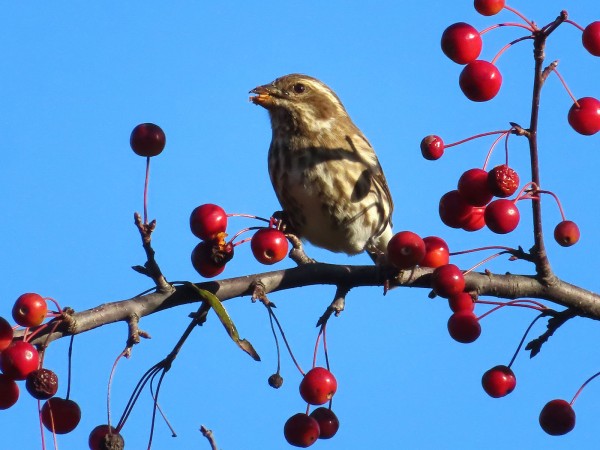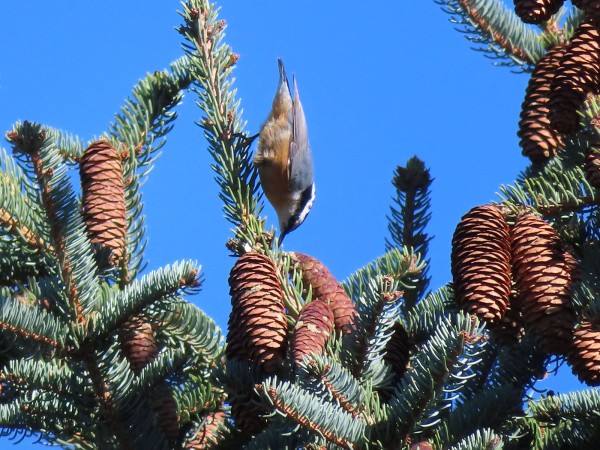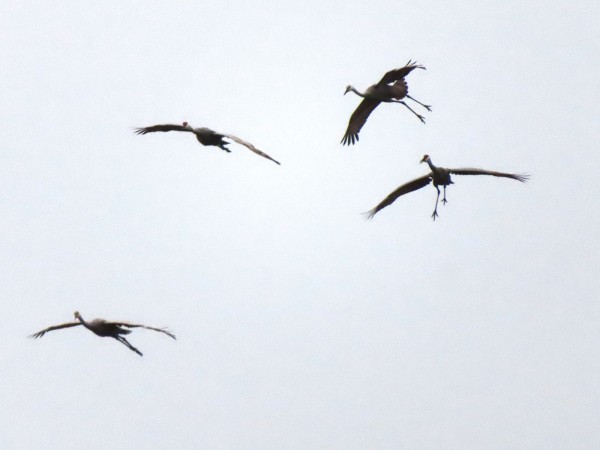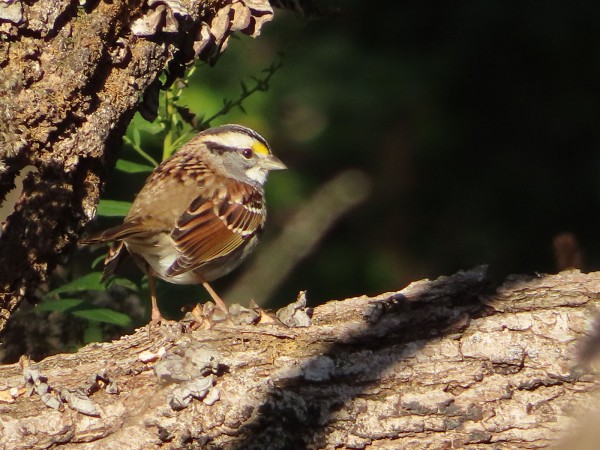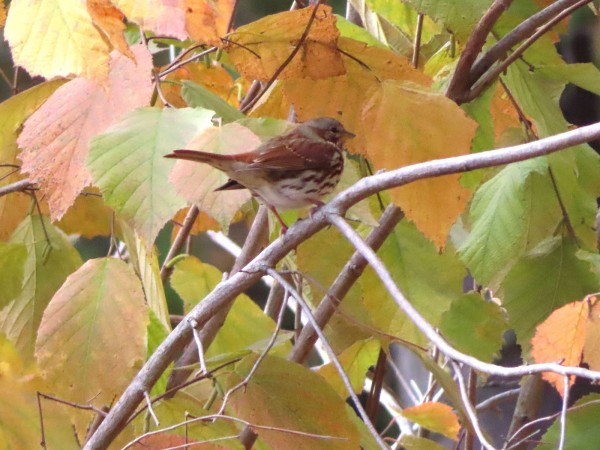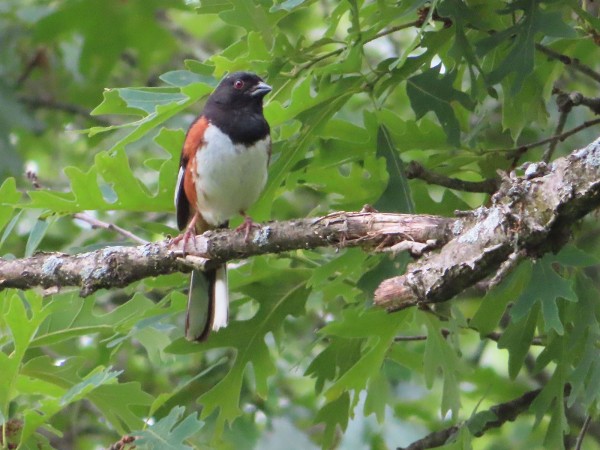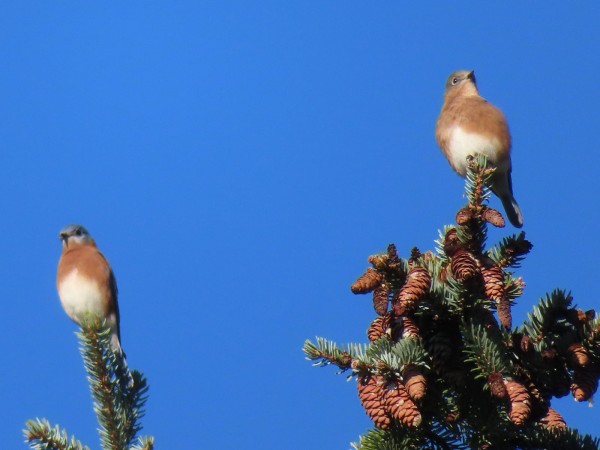Chuck's Birding Report #83
12 October - 18 October 2021
Dear fellow flock of birders,
I think the stars in the plant world this past week were the Crabapple Trees and their colorful fruit. Many of the crabapples have turned red and the shades of red vary from very light to dark red. There are also some crabapples that are shades of yellow. Another difference is their degree of ripeness. The birds have determined which ones are soft enough to eat. The small birds such as the goldfinches, house finches and others have been seen in certain crabapple trees eating a crabapple a little at a time. The American Robins can eat in larger bites or eat a whole crabapple in one gulp. What I found today and yesterday were a couple, rarely seen, Purple Finches eating crabapples. I like to identify the Purple Finches by using the females. The females have a large brown face patch with white above and below the patch almost outlining the patch. Female House Finches on the other hand don’t have any face patch but simply a uniformly light brown face. A photo of the female Purple Finch is included.
Another tree that has changed this past week were a few of the Spruce Trees and their pinecones. Some of the cones have really opened up allowing birds like Black-capped Chickadees and Red-breasted Nuthatches ready access to seeds which they seem to enjoy eating. Included is a photo of a Red-breasted Nuthatch about to probe some pinecones for seeds.
I’m still seeing a few species of warblers. The Yellow-rumped Warblers have been the most numerous but the numbers now seem to be decreasing. I also saw a few Palm Warblers and even fewer Orange-crowned Warblers. The warbler migration is about at its end.
I’ve really enjoyed watching the kinglets this past week. The Golden-crowned Kinglets have outnumbered the Ruby-crowned Kinglets. They move constantly so frustrate me when I try to photograph them.
Our family of 4 Sandhill Cranes, 2 adults and 2 colts, is still here and spend their nights on Curtis Prairie. They seem to always fly off early in the morning, just at sunrise or shortly after. I did see them return to Curtis Prairie and saw a couple of them bring their feet and legs down in preparation for landing. A photo is included.
There are still many White-throated Sparrows in the woods on the north side of Curtis Prairie. This morning I saw a flock of 15 there. They fly low over the wildflowers in that area, mainly Joe Pye Weed, and then dive down between the plants to find food. Once in a while they come up to perch for a moment on a branch but mostly they stay hidden in the plants. A photo of one is included.
I saw my first Fox Sparrow of the fall yesterday and another today. They are large sparrows and with lots of dark red coloration especially spots on their white breasts and bellies. They have a beautiful song but I never hear it in the fall. A photo is included.
Up to 3 Eastern Towhees have been spotted in the woods on the north side of Curtis Prairie this past week. To announce their presence they give the nasal “chweenk” sound. They are really a stunning bird when seen from the proper angle. A photo of a male is included.
Today, again in the woods on the north side of Curtis Prairie, I saw a Merlin perched near the top of a snag and looking around for something to eat. It was kind enough to pose for a photo and one is included.
It was beautiful out birding today and what made it even more beautiful was the number of Eastern Bluebirds I saw all over the Arboretum. I saw a total of 16. Many were doing their 2-note call which I returned back to them. I captured a photo of two side by side at the top of a pine tree. The photo is included.
That’s the bird report for the past week.
Good health to all of you and good birding too,
Chuck

